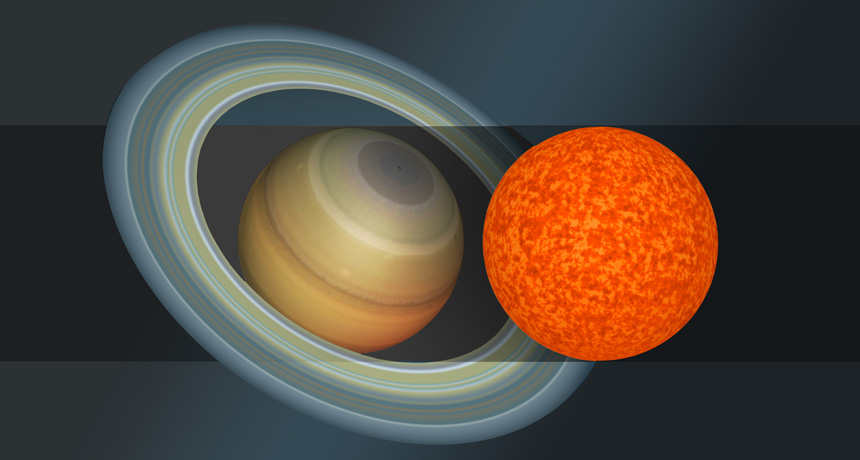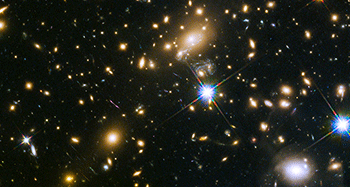Newfound stars rank as farthest and one of the smallest
It would take more than a backyard telescope to spot them

The star EBLM J0555-57Ab (illustrated, right) is one of the smallest ever found. It has a radius similar to Saturn’s (illustrated, left). The star’s mass is just large enough that it can fuse hydrogen in its core.
COURTESY OF UNIV. OF CAMBRIDGE
Share this:
- Share via email (Opens in new window) Email
- Click to share on Facebook (Opens in new window) Facebook
- Click to share on X (Opens in new window) X
- Click to share on Pinterest (Opens in new window) Pinterest
- Click to share on Reddit (Opens in new window) Reddit
- Share to Google Classroom (Opens in new window) Google Classroom
- Click to print (Opens in new window) Print
By Emily Conover and Lisa Grossman
Astronomers scanning the skies with powerful telescopes have found two record-setting stars. One is the most distant star ever observed. The other ranks as one of the tiniest. That second is so small that it can barely burn.
The light from the farthest star traveled across two-thirds of the universe. That puts the star a whopping 9 billion light-years away. That blows away the previous record holder. The previous farthest star observed directly was a mere 55 million light-years away.

Patrick Kelly is an astronomer at the University of California, Berkeley. He and his colleagues found the star in images from the Hubble Space Telescope. They were scanning images of a galaxy cluster known as MACS J1149. In April and May 2016, Kelly and his team saw a mysterious dimming and brightening in one point of light. It was in the galaxy cluster’s vicinity.
The team looked at follow-up images and made analyses, which they posted June 30 at arXiv.org. Those analyses showed that the light is probably from a single bright blue star. That star is behind the galaxy cluster and aligned along Hubble’s line of sight.
The star was visible only because of a phenomenon called gravitational lensing. The gravity of an object like the galaxy cluster is so huge that it bends the spacetime around it. That makes it act like a cosmic magnifying glass. Astronomers can use these objects to observe things like stars that are more distant than telescopes can see on their own.
The team calculated how much the star’s light was stretched by its journey. That was a clue to its extreme distance. Since the universe is 13.8 billion years old, that means this star’s light has crossed 65 percent of the universe to reach us.
Itty-bitty star
Scientists have also just turned up one of the smallest stars ever seen. Its discoverers all worked on a project known as the Wide Angle Search for Planets, or WASP. These astronomers use ground-based telescopes in Spain and South Africa to monitor the skies. The newfound one is quite small. Its radius is only about the size of Saturn’s.
The mini star has a very long name: EBLM J0555-57Ab. Its about the size of a previously reported runt, which also has a big name (2MASS J0523-1403).Both are much smaller than the Jupiter-sized TRAPPIST-1. That peewee star recently gained renown for hosting seven Earth-sized planets.
Although the newfound mini star’s girth is similar to a planet’s, it is much heftier. It has almost 300 times Saturn’s mass. Still, that’s only about 8 percent of the sun’s mass. That means that the object barely meets the qualifications for being a star, scientists reported July 12 in Astronomy & Astrophysics. By that they mean that the star just meets the limit at which nuclear fusion can occur in a star’s core. (Nuclear fusion is the process that fuels a star.) If the star were less massive, it would instead be a failed star known as a brown dwarf.
The miniature star orbits another, larger one. WASP scientists detected the star with a method typically used to scout for exoplanets. They watched it pass in front of its companion and dim the larger star’s light.







